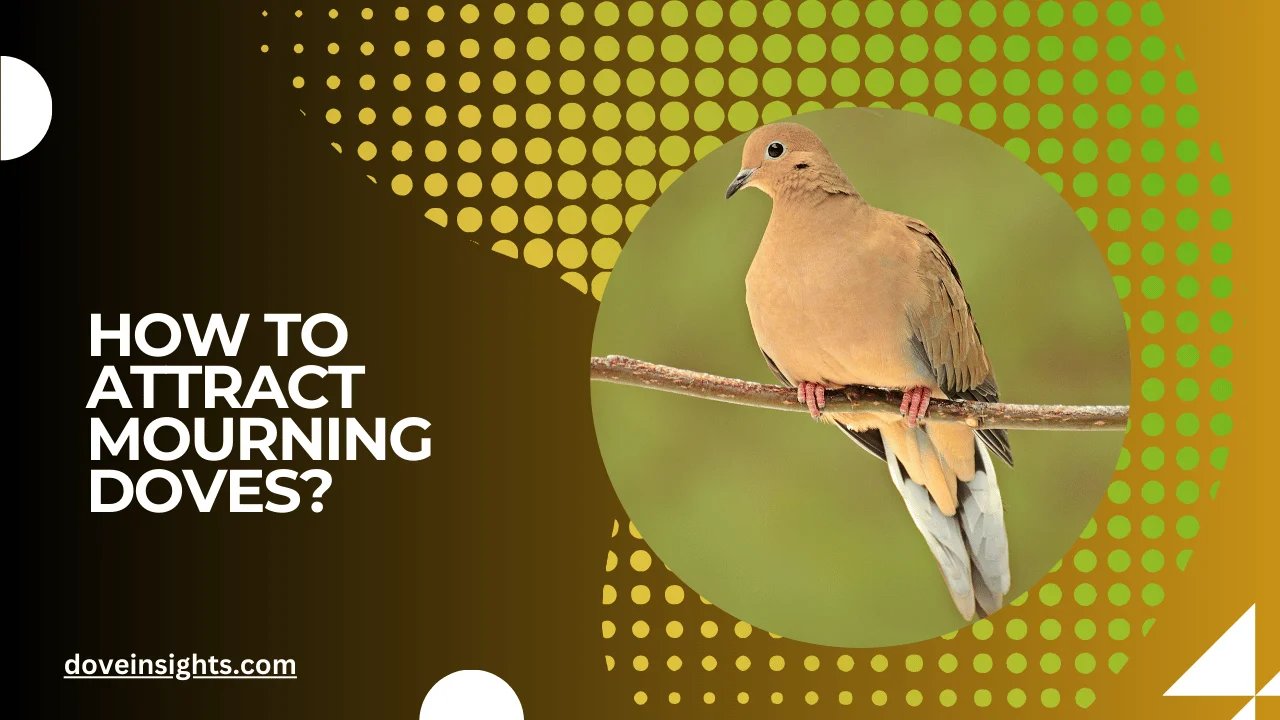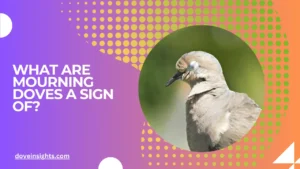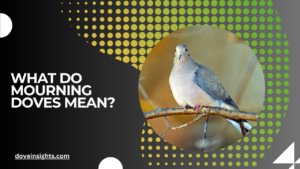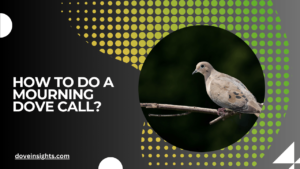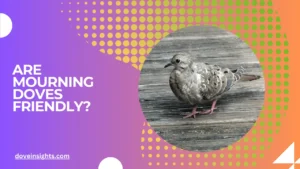The soft coo of a mourning dove drifting through the morning air is a sound that many find comforting, even spiritual.
These gentle birds symbolize peace and love, making them a favorite for bird watchers and nature lovers alike. If you’ve ever wished to attract mourning doves to your yard but aren’t sure how to create a welcoming environment, you’re not alone.
Understanding the needs and behaviors of these beautiful birds is the key to fostering their presence.
But why should you care about attracting mourning doves? Beyond their soothing presence, these birds play a vital role in the ecosystem, helping to disperse seeds and maintain balance in nature. Sadly, habitat loss and urbanization have made it increasingly difficult for mourning doves to find safe spaces to live and thrive.
Creating a sanctuary for them isn’t just rewarding for you—it’s a meaningful way to support their survival.
In this guide, we’ll explore everything you need to know about how to attract mourning doves to your space.
From understanding their dietary needs to creating the ideal nesting environment, you’ll gain actionable insights to turn your yard into a haven for these beloved birds. Let’s dive into the steps you can take to bring these symbols of serenity closer to home.
Contents
Understanding Mourning Doves
Characteristics of Mourning Doves
Mourning doves are known for their slender bodies, soft gray-brown feathers, and distinctive black spots on their wings. Their long tails with white edges give them a graceful appearance during flight.
A unique trait of mourning doves is their mournful cooing sound, which has earned them their name. Their calm and gentle behavior makes them one of the most cherished birds among bird enthusiasts.
Habitat Preferences
Mourning doves adapt well to various environments, from woodlands and farmlands to suburban areas and even urban settings.
They prefer open spaces with access to grassy fields for feeding and trees or shrubs for nesting. Their ability to thrive in diverse habitats has contributed to their widespread presence across North America.
Importance of Mourning Doves
These birds play a vital ecological role. As seed dispersers, mourning doves contribute to the growth of vegetation by consuming seeds and spreading them across different areas. They are also an integral part of the food chain, serving as prey for predators like hawks and snakes, thus maintaining ecological balance.
Providing the Right Food
Diet Overview
Mourning doves primarily consume seeds, grains, and small fruits. Their diet includes sunflower seeds, millet, and cracked corn, which provide the nutrients they need to thrive. They feed directly from the ground, making it essential to provide food in a way that suits their natural habits.
Best Bird Feeders for Mourning Doves
Platform feeders or ground trays are ideal for mourning doves since they mimic their natural feeding behavior. These feeders should be sturdy and spacious to accommodate their size and allow multiple doves to feed comfortably.
Food to Avoid
Avoid offering bread or processed foods to mourning doves, as these lack nutritional value and can be harmful. Similarly, salted seeds or any food with artificial additives should be excluded to ensure the birds’ health.
Creating a Safe Habitat
Nesting Needs
Mourning doves prefer simple nests, often built on tree branches, shrubs, or even man-made structures like window ledges. To encourage nesting, provide open containers or platforms in safe, elevated areas.
Shelter and Cover
Planting trees, shrubs, or hedges in your yard offers natural cover to protect doves from predators. Dense vegetation provides both nesting spots and refuge, making it a critical component of a dove-friendly environment.
Water Sources
Clean and accessible water sources are essential. Birdbaths or shallow fountains are ideal for attracting mourning doves, as they rely on water not only for drinking but also for bathing, which helps maintain their feathers.
Ensuring Safety from Predators
Common Threats
Mourning doves face threats from predators such as hawks, snakes, cats, and even squirrels, which may invade nests. Human activities, including window collisions, also pose significant risks.
Deterring Predators
To protect mourning doves, use predator guards around nesting areas and keep outdoor pets, especially cats, indoors. Additionally, placing nests in areas with limited access to predators can help increase their survival rates.
Reducing Human Disturbance
Minimizing loud noises and frequent disturbances in your yard ensures a stress-free environment for doves. Their calm nature makes them susceptible to stress, which can disrupt nesting and feeding behaviors.
Long-Term Maintenance and Observation
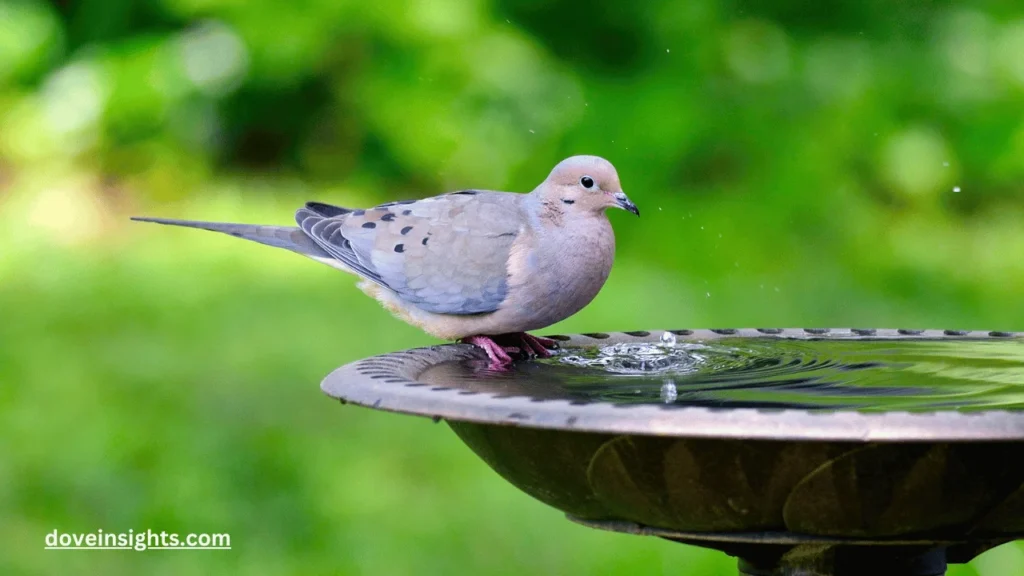
Seasonal Considerations
Adjust your efforts based on seasonal needs. During winter, provide extra food since natural resources may be scarce. In summer, ensure that shade and water sources are available to help doves cope with heat.
Monitoring and Record-Keeping
Observing mourning doves in your yard is both enjoyable and insightful. Keep a journal or photographs to track their activity, nesting habits, and population changes. This can also contribute to citizen science projects.
Sustaining the Habitat
Regular maintenance, such as cleaning feeders and water sources, ensures a healthy environment for the doves. Replace old nesting materials and monitor for potential hazards to sustain a welcoming space for these gentle birds.
Conclusion
Mourning doves are not only a joy to observe but also play a critical role in maintaining ecological balance. By understanding their needs and creating a safe, food-rich habitat, you can attract and support these gentle creatures in your yard.
From providing the right food and shelter to ensuring their safety from predators, every effort you make contributes to the survival and well-being of mourning doves. These small acts of care not only enhance your outdoor space but also foster a connection with nature.
Whether you’re an experienced bird watcher or a curious beginner, attracting mourning doves offers a rewarding experience. Start today, and you might soon hear the soothing coos of mourning doves, bringing peace and harmony to your surroundings.
FAQ’s
What do mourning doves eat?
They eat seeds, grains, and small fruits. Millet, sunflower seeds, and cracked corn are favorites.
Where do mourning doves nest?
Mourning doves build nests on tree branches, shrubs, or man-made structures like window ledges.
How do I protect mourning doves from predators?
Use predator guards, keep cats indoors, and plant dense shrubs for shelter.
Do mourning doves migrate?
Some populations migrate during colder months, while others remain in warmer regions year-round.
Can I attract mourning doves in urban areas?
Yes, mourning doves adapt well to urban environments if food, water, and shelter are available.
Why don’t mourning doves eat from traditional bird feeders?
Mourning doves prefer platform feeders or ground trays that suit their natural feeding habits.

